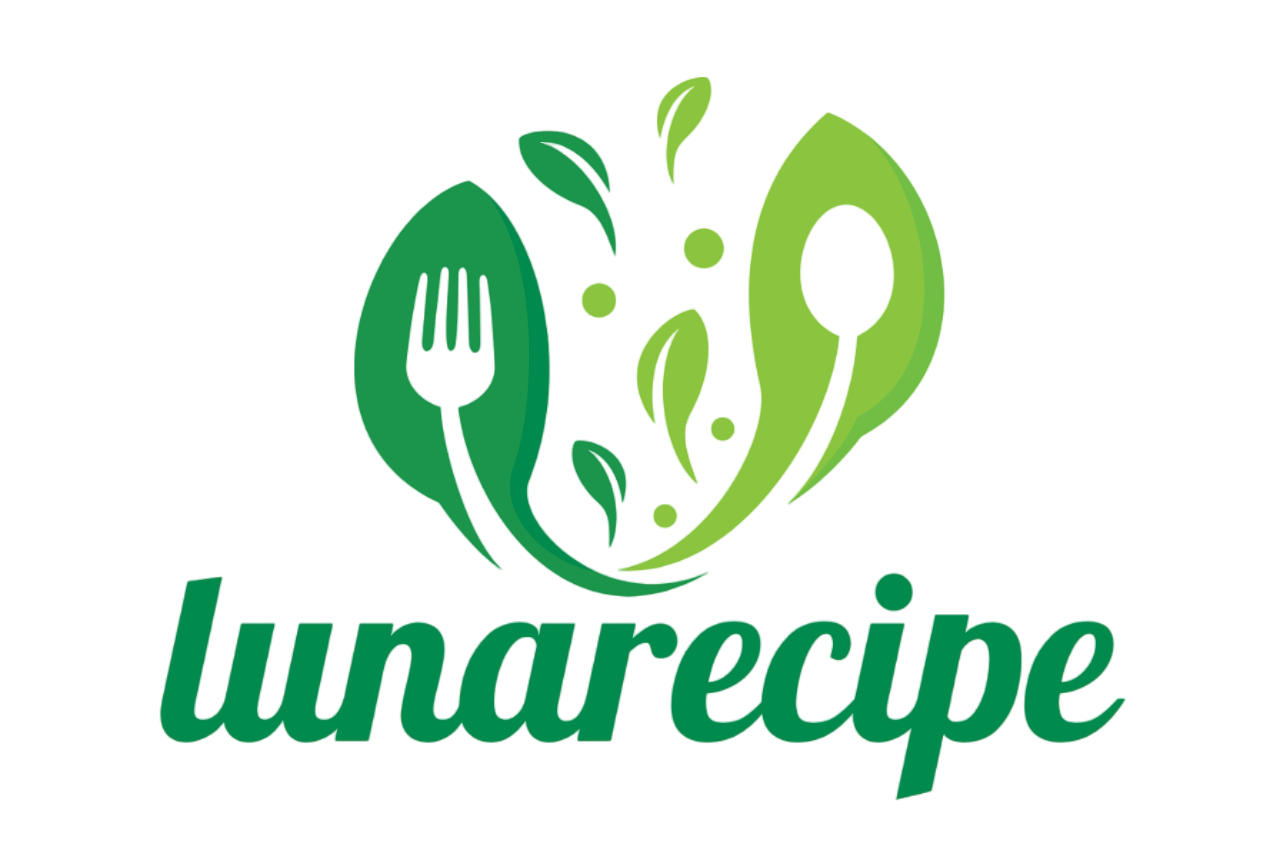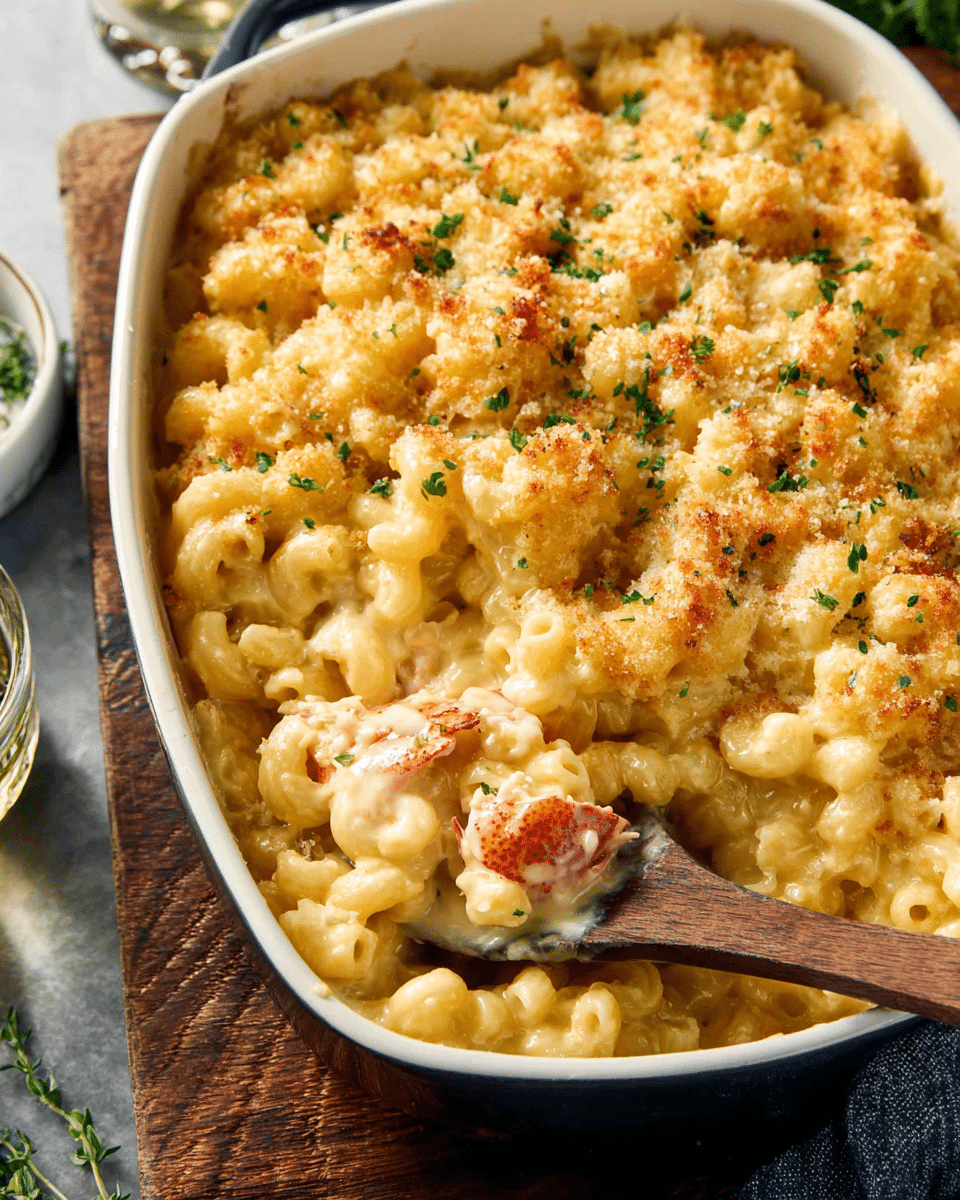Lobster Mac and Cheese is the perfect combination of creamy cheese and luxurious lobster. The rich, velvety sauce coats the macaroni and lobster, creating an indulgent dish that is perfect for special occasions or a comforting dinner.
This recipe is an easy-to-make yet elegant dish that elevates the classic mac and cheese to new heights. Whether you’re serving it for a dinner party or a cozy night in, it’s sure to impress your guests with its decadent flavor and delightful presentation.
Full Recipe:
-
1 lb cooked lobster meat, chopped
-
1 lb elbow macaroni
-
4 tablespoons butter
-
1/4 cup flour
-
2 cups whole milk
-
1 cup heavy cream
-
2 cups shredded sharp cheddar cheese
-
1 cup shredded mozzarella cheese
-
1/2 cup grated Parmesan cheese
-
Salt and pepper to taste
-
1 teaspoon garlic powder
-
1/2 teaspoon paprika
-
1 tablespoon fresh parsley, chopped (optional)
Directions:
-
Cook the elbow macaroni according to package instructions, drain, and set aside.
-
In a large saucepan, melt the butter over medium heat. Add the flour and cook for 1-2 minutes, stirring constantly, to form a roux.
-
Gradually whisk in the milk and heavy cream until the sauce is smooth and begins to thicken.
-
Stir in the cheddar cheese, mozzarella, and Parmesan cheese, and continue to cook, stirring, until the cheese is melted and the sauce is creamy.
-
Add the cooked lobster meat, garlic powder, paprika, salt, and pepper, and stir to combine.
-
Add the cooked macaroni to the sauce and toss to coat.
-
Serve immediately, garnished with fresh parsley if desired.
Prep Time: 15 minutes | Cooking Time: 20 minutes | Total Time: 35 minutes
Kcal: 620 kcal | Servings: 4 servings
History and Origin
Mac and cheese, as we know it today, has a long and storied history. It originated in Europe, with some versions of cheesy pasta dishes appearing in Italy as early as the 18th century. The concept of pairing pasta with cheese was nothing new, but the creamy, baked version we are familiar with today became popular in the United States, particularly in the 1930s when convenience foods like boxed mac and cheese became a household staple.
However, the addition of lobster to mac and cheese is a more modern innovation, usually associated with American gourmet cuisine. Lobster, often regarded as a luxury ingredient, brings a touch of sophistication to the classic comfort food. This upscale version likely emerged from New England or coastal areas, where lobster is abundant and a popular choice for fine dining. By combining lobster with mac and cheese, chefs have managed to balance the simplicity of pasta and cheese with the elegance of seafood, creating a dish that satisfies both comfort and indulgence.
Lobster Mac and Cheese quickly became a popular choice in high-end restaurants, particularly in areas with access to fresh seafood. Over time, it has made its way into home kitchens, where it can be adapted to personal tastes and preferences, making it a favorite for gatherings, holiday meals, or any time you’re craving something special.
Variations and Adaptations
While Lobster Mac and Cheese is a decadent dish in its own right, it has a lot of room for creative variation. Regional adaptations, ingredient substitutions, and cooking methods can all contribute to unique takes on this luxurious pasta dish.
-
Cheese Variations: While the traditional recipe uses a combination of sharp cheddar, mozzarella, and Parmesan, you can experiment with other cheeses to add a unique flavor profile. Gruyère or fontina would add a nutty richness, while smoked gouda could give the dish a smoky edge that pairs wonderfully with lobster.
-
Adding Herbs: Fresh herbs like thyme, tarragon, or parsley can be incorporated into the sauce for added depth of flavor. A sprinkle of fresh basil can also add a refreshing contrast to the creamy dish.
-
Crusty Topping: Some variations of Lobster Mac and Cheese include a crispy, golden topping, often made by sprinkling breadcrumbs or panko on top before baking the dish. The crumbs add a delightful crunch that contrasts with the creamy pasta.
-
Spices and Heat: For those who enjoy a little heat, incorporating red pepper flakes, hot sauce, or even jalapeños into the dish can bring a spicy kick to balance out the rich, cheesy sauce.
-
Substituting Lobster: While lobster is the star ingredient in this dish, you can experiment with other shellfish like shrimp or crab for a different seafood twist. Alternatively, if you prefer a vegetarian version, you could skip the seafood altogether and load the mac and cheese with sautéed vegetables like mushrooms, spinach, or leeks.
-
Cooking Methods: Some people prefer to make Lobster Mac and Cheese as a baked casserole, with the pasta and lobster mixture topped with a crispy cheese crust. Others opt for a stovetop version, where the pasta is cooked in a creamy sauce and served immediately. Each method brings out a slightly different texture and flavor, so the choice is yours.
Nutritional Information
Lobster Mac and Cheese is undoubtedly a rich and indulgent dish, and while it offers a blend of comforting and luxurious ingredients, it is also relatively high in calories, fat, and sodium. Here’s a breakdown of the dish’s key nutritional components, keeping in mind that the exact values will depend on specific ingredient choices and portion sizes.
-
Calories: A single serving of Lobster Mac and Cheese typically contains between 600 and 700 calories, depending on the proportions of cheese, lobster, and pasta used.
-
Fat: With butter, cream, and cheeses in the sauce, fat content can range from 30 to 40 grams per serving. While this is high, a lot of the fat comes from healthy sources like butter and lobster.
-
Protein: Lobster is an excellent source of lean protein, and a serving of Lobster Mac and Cheese can provide around 35-40 grams of protein.
-
Carbohydrates: The pasta contributes a significant amount of carbohydrates, typically around 50 grams per serving, depending on the amount used.
-
Micronutrients: Lobster is rich in minerals like zinc and selenium, which contribute to immune health, while the cheese provides calcium for bone strength. The addition of fresh herbs and spices can offer some additional vitamins and antioxidants, although the dish as a whole is relatively low in fiber.
If you’re looking to make a lighter version, you could try using reduced-fat cheese, whole wheat pasta, or even a cauliflower-based pasta for added fiber. Substituting a portion of the cream with low-fat milk or vegetable broth can also reduce the dish’s fat content.
Serving Suggestions and Pairings
Lobster Mac and Cheese is a dish that’s both rich and filling, so it pairs best with lighter side dishes that help balance out the heaviness of the main course. Here are a few serving suggestions to complement the lobster mac:
-
Salads: A crisp, refreshing green salad is the perfect side for Lobster Mac and Cheese. Try a simple arugula salad with lemon vinaigrette or a classic Caesar salad to provide a light contrast to the creamy pasta.
-
Roasted Vegetables: Roasted asparagus, Brussels sprouts, or roasted carrots can provide a savory, earthy flavor that complements the richness of the dish without overpowering it.
-
Breads: A warm, crusty baguette or garlic bread is ideal for soaking up any leftover creamy sauce. The slight crunch of the bread offers a textural contrast that works wonderfully alongside the mac and cheese.
-
Wine Pairing: Pairing Lobster Mac and Cheese with wine can elevate the experience. A crisp, acidic white wine like a Chardonnay or Sauvignon Blanc will help cut through the richness of the dish. If you prefer red wine, a light Pinot Noir can also work well.
-
Cocktails: A refreshing cocktail like a classic gin and tonic or a sparkling wine spritzer can offer a lively contrast to the creamy comfort of Lobster Mac and Cheese.
Tips and Tricks for Success
To ensure your Lobster Mac and Cheese turns out perfectly every time, keep these expert tips in mind:
Advertisement
-
Don’t Overcook the Pasta: Overcooked pasta can make the dish mushy. Cook the macaroni just until al dente and drain immediately to prevent it from becoming too soft.
-
Use Fresh Lobster: If possible, opt for fresh lobster rather than pre-cooked or frozen lobster meat. The flavor will be more delicate and rich, and the texture will be tender rather than rubbery.
-
Balance the Cheese: Too much cheese can make the dish overly greasy. Ensure a balanced mixture of sharp cheddar, mozzarella, and Parmesan for a creamy yet flavorful sauce that isn’t too heavy.
-
Make Ahead: Lobster Mac and Cheese can be made ahead of time. Prepare it, but don’t bake it until you’re ready to serve. This is perfect for dinner parties or busy weeknights.
-
Don’t Forget the Topping: For an extra indulgent touch, sprinkle panko breadcrumbs or crushed crackers on top of your mac and cheese before baking for a crunchy, golden crust.
Potential Health Benefits
While Lobster Mac and Cheese is not a low-calorie or low-fat dish, there are some potential health benefits to its ingredients, especially when consumed in moderation:
-
Lobster: Lobster is an excellent source of lean protein, with minimal fat content. It’s also packed with essential minerals like zinc, selenium, and iron, all of which support immune function and overall health.
-
Cheese: The cheese in Lobster Mac and Cheese provides a good source of calcium, which is essential for bone health, and vitamin A, which is important for vision and immune health.
-
Herbs and Spices: The addition of herbs like parsley and paprika can offer antioxidants, which support the body’s ability to fight inflammation and improve digestion.
Conclusion
Lobster Mac and Cheese is a luxurious yet comforting dish that combines the best of two worlds – the indulgent, cheesy goodness of mac and cheese, with the delicate, rich flavors of lobster. Whether you’re looking to impress at a dinner party or indulge in a special meal at home, this dish is sure to satisfy. Its versatility allows for plenty of room for creativity, whether you’re adding extra cheese, herbs, or spices to suit your taste. So why not treat yourself to a bowl of this decadent delight today?






